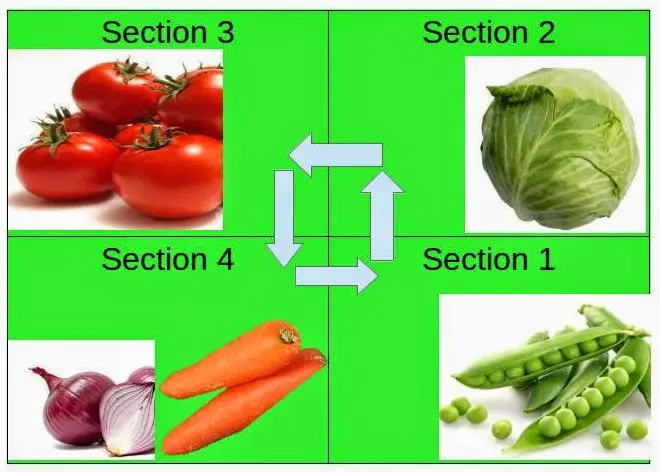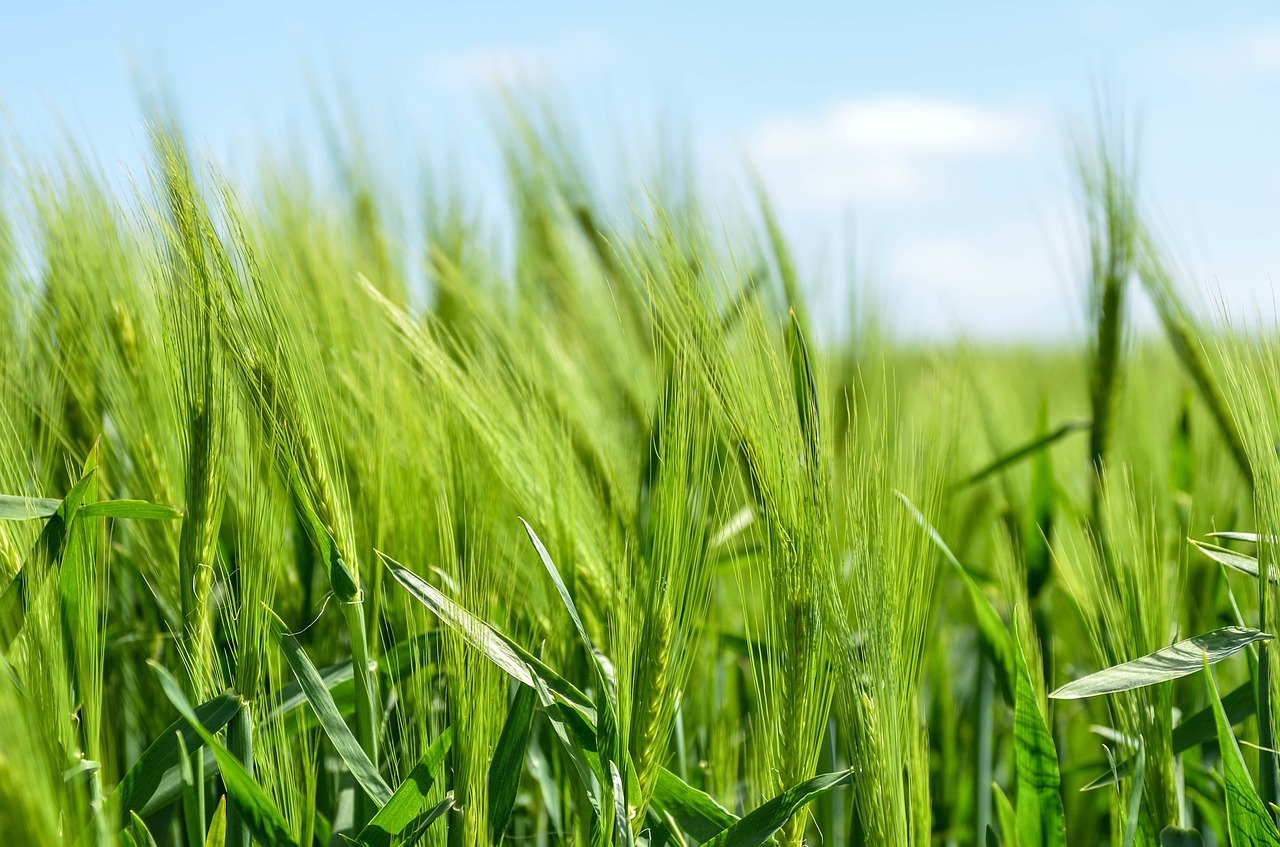We use affiliate links to run our site. When you buy through links on our site, we may earn an affiliate commission, without any added cost to you. Learn more
Are you tired of dealing with pest infestations, poor crop yields, and nutrient-depleted soil in your garden or farm? If so, it might be time to try out crop rotation.
This simple, yet effective technique involves planting different types of crops in a specific pattern over time, rather than growing the same crop year after year in the same location.
Not only does crop rotation improve soil health and prevent pests and diseases from becoming a problem, but it can also increase crop yields and diversity.
In this guide, we’ll give you all the info you need to create a crop rotation plan that works for you, including how to group crops, choose a rotation pattern, and troubleshoot common issues.
So let’s get started!
What is crop rotation:
Crop rotation is a simple yet powerful system for growing healthier, more productive crops. It refers to the process of rotating different crops on the same plot of land throughout the year in a particular order.
By rotating different crops through the same field, we can keep soil nutrients balanced and prevent pests and diseases from taking over.
This way we can get the most out of our farms and gardens while also preserving the health of our soil for the long term. Plus, crop rotation is an easy and natural way to boost crop yields and keep our soil fertile for years to come.
Benefits of Crop Rotation:
Here are some of the main benefits of crop rotation:
- Improved soil health: By rotating different crops, you can help prevent nutrient depletion in the soil and maintain a healthy balance of nutrients. This will result in better crop growth and yields.
- Pest and disease control: Crop rotation can help control pests and diseases by interrupting their life cycles and preventing them from becoming established in a particular area.
- Reduced reliance on synthetic pesticides and fertilizers: By rotating crops, you can often reduce the need for synthetic pesticides and fertilizers, which can be harmful to the environment.
- Increased crop diversity: Crop rotation allows farmers and gardeners to grow a wider variety of crops, which can lead to a more diverse and nutritious diet for themselves and their families.
- Increased crop yields: Properly planned crop rotation can lead to improved crop growth and higher yields.
- Improved water retention in soil: Certain crops, such as cover crops, can help improve the water retention of soil, which can be particularly beneficial in areas prone to drought.
- Carbon sequestration: Crops such as legumes are known to fix nitrogen in the soil, which can help reduce greenhouse gas emissions and sequester carbon in the soil.

Types of Crops to Rotate
There are many different types of crops that can be rotated. Each one requires different levels of care in terms of watering, fertilizing, weeding, etc., so it’s important to research each one before deciding which ones will work best for you.
The most common types of crops used in rotation are:
- Grains: Wheat, oats, corn, rice, barley
- Legumes: Beans, peas, lentils, peanuts
- Vegetables: Tomatoes, peppers, onions, carrots, lettuce, potatoes
- Fruits: Apples, pears, berries, cherries, plums
- Cover crops: Legumes, grasses, and other crops that are grown specifically to improve soil health, such as clover and rye.
When creating a crop rotation plan, always consider the specific needs of each crop and how they will interact with one another in terms of nutrient needs and pest and disease susceptibility. Also, consider the local climate and soil conditions, as well as the size and needs of your farm or garden.
How to create a crop rotation plan
Here are the steps to creating a crop rotation plan:
- Identify the crops you will grow: Make a list of all the crops you want to grow in your garden or farm. Consider factors such as the local climate, soil conditions, and your own preferences.
- Determine the length of your crop rotation cycle: Decide how long your crop rotation cycle will be, taking into account the size of your farm or garden and the types of crops you will be growing. A common length for a crop rotation cycle is three to four years.
- Group crops based on their family and characteristics: Group your crops based on their family and characteristics, such as their nutrient needs and pest and disease susceptibility. This will help you determine which crops to rotate together.
- Choose a crop rotation pattern: Decide on a crop rotation pattern that will work for your farm or garden. There are several common patterns to choose from, including continuous cropping, two-year rotation, three-year rotation, and four-year rotation.
- Make a plan: Using your list of crops, your crop rotation cycle length, and your chosen crop rotation pattern, create a detailed plan for your crop rotation. Make sure to record your plan so you can refer to it each year as you plant your crops.
- Implement and adjust as needed: Put your crop rotation plan into action and be prepared to make adjustments as needed. Be sure to monitor your crops and soil health and make any necessary changes to your plan based on your observations.
Crop Rotation Patterns:
Crop rotation patterns are an important part of maintaining a healthy and productive farm. If you’re looking to maximize the efficiency of your farm, it’s essential to plan out a successful crop rotation that meets all your needs.
There are several common crop rotation patterns that you can use, including:
- Continuous cropping: This is the practice of growing the same crop year after year in the same location. While this can be efficient in terms of labor and equipment, it can lead to soil nutrient depletion and increased pest and disease problems.
- Two-year rotation: This pattern involves rotating two different crops each year, with one crop being grown for two years in a row and the other being grown for the next two years. This can help improve soil health and pest and disease control, but may not be as effective at preventing nutrient depletion as longer rotation cycles.
- Three-year rotation: This pattern involves rotating three different crops, with each crop being grown for one year followed by two years of the other two crops. This can be a good balance between efficiency and soil health and is often used on small to medium-sized farms.
- Four-year rotation: This pattern involves rotating four different crops, with each crop being grown for one year followed by three years of the other three crops. This can be a more complex system but can be very effective at improving soil health and reducing pest and disease problems. It is often used on larger farms.
Companion Planting A Basic Know-How
Examples of crop rotation plans:
Here are two simple examples of crop rotation plans:
Example 1: Two-year rotation for a small vegetable garden
Year 1: Tomatoes, peppers, onions
Year 2: Carrots, lettuce, potatoes
Example 2: Three-year rotation for a large farm
Year 1: Wheat, corn, beans
Year 2: Rice, oats, peas
Year 3: Barley, lentils, peanuts
In the first example, the two-year rotation cycle allows for the inclusion of six different vegetables, which can provide a diverse and nutritious harvest for the gardener. The vegetables in this plan are grouped based on their nutrient needs and pest and disease susceptibility.
In the second example, the three-year rotation cycle allows for the inclusion of nine different crops, which can provide a diverse and profitable harvest for the farmer. The crops in this plan are also grouped based on their nutrient needs and pest and disease susceptibility.
These are just two examples, there are many other ways you can create a crop rotation plan that works for you.
Factors to Consider:
When creating a crop rotation plan, there are several factors you should consider like:
- The specific needs of each crop: Different crops have different nutrient needs and are susceptible to different pests and diseases. So you should always group crops together in a way that takes these needs into account.
- The size and needs of your farm or garden: The size and needs of your farm or garden will determine the length of your crop rotation cycle and the number of crops you can include in your plan.
- The local climate and soil conditions: The local climate and soil conditions is a big factor in determining which crops will thrive in your area and what types of rotation patterns will work best. Don’t ignore it.
- Your goals for soil health and crop production: Consider your goals for soil health and crop production when creating your rotation plan. Do you want to improve soil fertility, reduce pest and disease problems, or increase crop yields?
- Your resources and labor: Consider your available resources and labor when creating your rotation plan. A more complex rotation pattern may require more time and effort to implement, but may also provide more benefits in terms of soil health and crop production.
Tips for successful crop rotation
Here are some tips for successful crop rotation:
- Practice proper soil management: Proper soil management is essential for successful crop rotation. This includes practices such as adding organic matter, testing soil pH, and controlling erosion.
- Use cover crops: Cover crops are crops that are grown specifically to improve soil health. They can help add nutrients to the soil, control erosion, and suppress weeds. Consider incorporating cover crops into your rotation plan to improve soil health and fertility.
- Monitor your crops and soil health: Regularly monitor your crops and soil health to ensure that your rotation plan is working as intended. Make adjustments as needed based on your observations.
- Don’t be afraid to make adjustments: Crop rotation is not a one-size-fits-all solution, and you may need to make adjustments to your plan as you go along. Don’t be afraid to experiment and make changes based on what works best for your farm or garden.
- Keep records: Keep detailed records of your crop rotation plan, including what crops you planted, when you planted them, and how they performed. This will help you track your progress and make any necessary adjustments to your plan.
- Consider the long-term: Crop rotation is a long-term strategy, and it may take a few years before you see the full benefits. Be patient and stick with your plan, and you will likely see improvements in soil health and crop yields over time.
- Get help if you need it: If you’re new to crop rotation or having trouble with your plan, don’t be afraid to seek help from experienced farmers or agricultural extension agents. They can provide valuable guidance and support as you implement your rotation plan.
Conclusion:
Crop rotation is an important agronomic practice that can help improve soil health, reduce pests and diseases, and increase crop yields. By planting different crops in a specific pattern over time, farmers and gardeners can avoid depleting the soil of certain nutrients, control pests and diseases, and reduce the need for synthetic pesticides and fertilizers.
Crop rotation can also increase crop diversity and improve water retention in soil. While it may take some time and effort to implement a crop rotation plan, the long-term benefits are well worth it.
By following the steps outlined in this guide and considering the specific needs of your farm or garden, you can easily create a crop rotation plan that works for you and helps to sustainably grow healthy, productive crops.
Hope you enjoyed the article. Please feel free to share the information with others too.
Amazon and the Amazon logo are trademarks of Amazon.com, Inc, or its affiliates.
